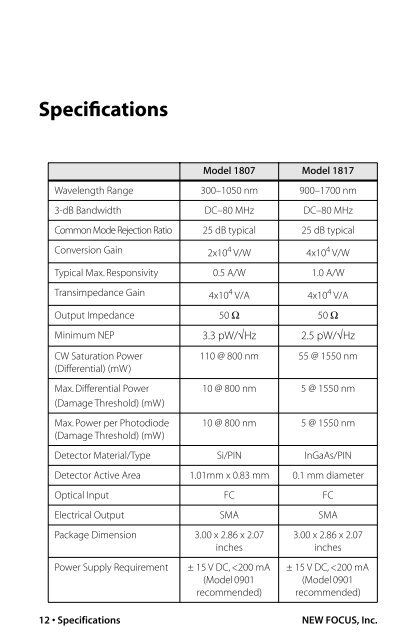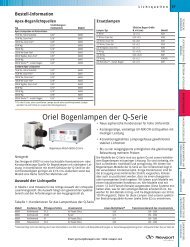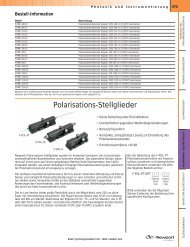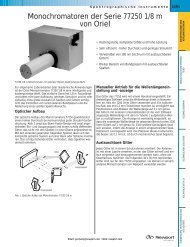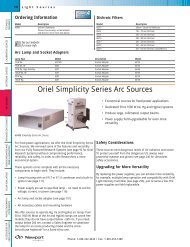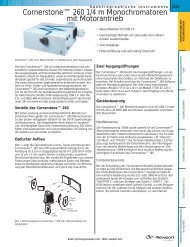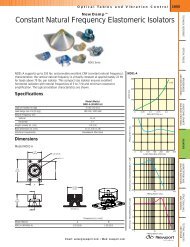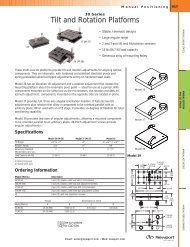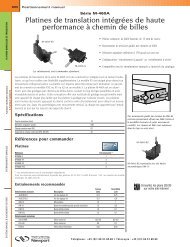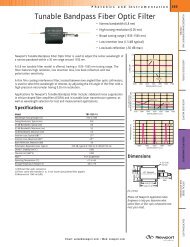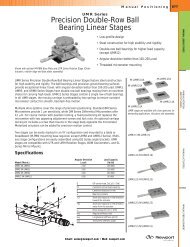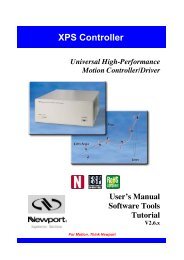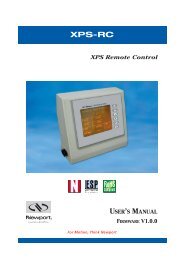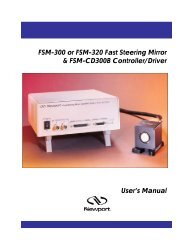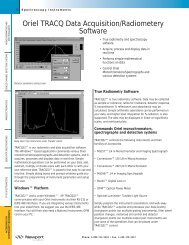80-MHz Balanced Photoreceivers
80-MHz Balanced Photoreceivers
80-MHz Balanced Photoreceivers
You also want an ePaper? Increase the reach of your titles
YUMPU automatically turns print PDFs into web optimized ePapers that Google loves.
Specifications<br />
Model 1<strong>80</strong>7 Model 1817<br />
Wavelength Range 300–1050 nm 900–1700 nm<br />
3-dB Bandwidth DC–<strong>80</strong> <strong>MHz</strong> DC–<strong>80</strong> <strong>MHz</strong><br />
Common Mode Rejection Ratio 25 dB typical 25 dB typical<br />
Conversion Gain 2x104<br />
V/W 4x104<br />
V/W<br />
Typical Max. Responsivity 0.5 A/W 1.0 A/W<br />
Transimpedance Gain 4x104<br />
V/A 4x104<br />
V/A<br />
Output Impedance 50 Ω<br />
Minimum NEP<br />
CW Saturation Power<br />
(Differential) (mW)<br />
Max. Differential Power<br />
(Damage Threshold) (mW)<br />
Max. Power per Photodiode<br />
(Damage Threshold) (mW)<br />
50 Ω<br />
3.3 pW/ √Hz<br />
2.5 pW/ √Hz<br />
110 @ <strong>80</strong>0 nm 55 @ 1550 nm<br />
10 @ <strong>80</strong>0 nm 5 @ 1550 nm<br />
10 @ <strong>80</strong>0 nm 5 @ 1550 nm<br />
Detector Material/Type Si/PIN InGaAs/PIN<br />
Detector Active Area 1.01mm x 0.83 mm 0.1 mm diameter<br />
Optical Input FC FC<br />
Electrical Output SMA SMA<br />
Package Dimension 3.00 x 2.86 x 2.07<br />
inches<br />
Power Supply Requirement ± 15 V DC,


